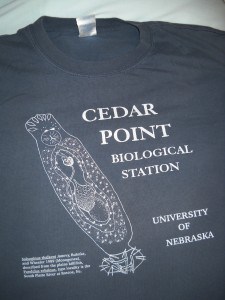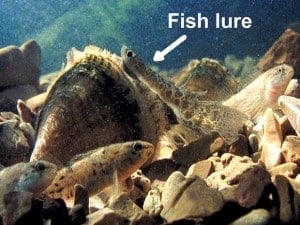Editors’ note: read part one here.
***
Scars and scabs were scattered across Robert’s dark, crater-filled face. Sinewy, tattooed arms revealed the strength that kept him alive during a rough life homeless on the streets. Tattered clothes fell off his tall, thin, emaciated body. And the smell…I suppressed a rising urge to vomit and struggled to smile. My first day serving at this soup kitchen, I wanted to get to know some of the guys who frequented this place. Just my luck to end up seated next to this guy.
Trying to make the best of it, I struck up a conversation with him. After a few minutes, he began to open up to me, and shared the struggles and sufferings of his difficult life. To my surprise, my initial revulsion turned to empathy and, eventually, I began to like Robert and his sense of humor and idiosyncratic way of eating his food. Robert beat the odds by surviving the often violent world of street life while retaining his humanity. For me, his story was not only inspiring, but, well, beautiful.
The phrase, “beauty is in the eye of the beholder” captures the difficulty in defining beauty. To paraphrase Associate Justice Potter Stewart, beauty is hard to define, but “I know it when I see it.” Jesuit spiritual guru Anthony De Mello says that the first act of love is to see the other as they truly are and this “involves the enormous discipline of dropping your desires, your prejudices, your memories, your projections, your selective way of looking”.1 This “other” may frighten, confuse and disgust us. But as we get to learn more about the other’s story and see them for who they truly are we begin to see them as human, even beautiful.
I believe the same applies to non-humans. We might find something initially revolting or disgusting, but after learning its story – after we begin to see it – we begin to love it and find it beautiful. A quick review: 1. beauty is one of those transcendentals, which according to medieval philosophers, are attributes that belong to every being that exists (such as being, unity and goodness) – even parasites. 2. A parasite, in the broadest sense, is any organism that benefits at the expense of another organism.
Society looks down on parasites. Consider the following humorous, but fictional etymology of the word politics: poly (many) + tics (blood sucking parasites). Joseph Priestley once said, “The greater part of critics are parasites, who, if nothing had been written, would find nothing to write.” Clearly, we do not hold parasites in high opinion, but as degenerate, ugly, useless, and even dangerous. Yet, the Judeo-Christian tradition holds that God created the world, including parasites, and that the world is good, which we’ve already addressed.
How can we see beauty in parasites? Just as I began to like Robert as I began to know his story, when we consider the stories of the complicated life cycles of some parasites, we’ll be able to appreciate a beauty that was always there. Stories contextualize events and objects, allowing us to better appreciate their roles in the big picture. In other words, stories allow us to see things differently.
Consider the life cycle of North America’s freshwater mussels, which are endangered due to the increased pollution of their river habitat. Conservation efforts to save them are compounded by unfortunate sounding common names as the ‘threehorn wartyback’ and the ‘mucket,’ not to mention that the larval stage of most species is parasitic upon fish. But the parasitic stage (the very cool sounding, glochidia) does little harm as they cling to fish gills, hitching a free ride to a new home in the river. And the way some of them attach to fish gills deserves a Nobel prize in beauty.
The adult freshwater mussel modifies its inner tissue so it resembles a small minnow swimming near the shell (see picture). But it’s actually a glochidia-filled sac, attracting hungry fish to investigate, much like mythical sirens luring sailors to their doom. When the unsuspecting fish attempts to bite the sac, the mother mussel releases her baby glochidia, which attach to the fish’s gills. Such elegance. Such panache and flair for the dramatic. Nature is filled with examples like this.
Consider also the life cycle of Dicrocoelium dendriticum, the crazy ant worm.2 As an aside, you might want to put down that bagel for this next bit – it gets a little graphic. Its eggs are passed out of the feces of an infected herbivore like a cow. Land snails eat these eggs where they develop into the larval stage. The mature larvae are passed out in the snail’s slime trails in the form of slime balls. Ants eat these slime balls along with the parasitic larvae. Once eaten, one larva travels to the brain and encysts near the ant’s nerve center and dies. The rest of the larvae encyst elsewhere in the ant’s body.
The dead larva in the ant’s nerve center alters the ant’s behavior. Now, instead of staying near the ground and scurrying away at the first sign of danger, the ant climbs to the tips of grass blades and clings there tightly during the cool parts of the day. An unsuspecting grazing herbivore eats the infected ant along with its grass meal. Note how the parasite has manipulated the behavior of its host to help complete its own life cycle. Beauty exists in the interplay among the various characters in this story. A delicate, intricate balance needs to be maintained for this life cycle to be completed. Apparently, I’m not the only one who thinks this parasite is cool because it stars in its own Captain Higgins comic.

A t-shirt featuring the beautiful monogenean fish parasite (more than once mistaken for the Virgin Mary).
In fact, a brief survey of the internet will reveal several great parasite resources in which you can get to know the “stories” of a variety parasites. Parasite of the Day (POD) used to feature a different parasite every day in 2010 (what was the POD on your birthday?). They had to reduce their daily posts due to time constraints (not lack of parasites!) but still manage to feature a parasite about three times a month. Creepy Dreadful Wonderful Parasites provides a parasitologist’s view of the world that is extremely informative and highly recommended for anyone interested in medicine. I’m waiting for Animal Planet’s Monsters Inside Me to be available on DVD.
The Car Talk guys of the parasite world, Dick and Vincent, host the highly informative and entertaining, This Week in Parasitism podcast. Radiolab featured my favorite topic a few years ago. For those who still prefer learning the old fashioned way, check out a few of my favorites parasitic books: Parasite Rex by Carl Zimmer, Parasites: Tales of Humanity’s Most Unwelcome Guests by Rosemary Drisdelle and the textbook Foundations of Parasitology by Roberts and Janovy. By learning more about these interesting creatures, I hope you can begin to see and appreciate their beauty.
If we can “befriend” a tapeworm, then maybe we can also befriend a homeless man like Robert. Opening our minds and hearts to God’s smallest, most despised creatures can lead us to greater love for one another. Their stories help us to see them as they truly are – as God sees them. Despite the suffering and death parasites can cause, which admittedly can be catastrophic, we can find some good and beauty in them, at least in that they can expand our capacity to love. So we end Part II where we started Part I, with the words of St Ignatius. In these words we find not only inspiration to learn about parasites, but also guidance to love and see as beautiful those people who first scare us, but ultimately help us realize our best self.
“All the things in this world are gifts of God, presented to us so that we can know God more easily and make a return of love more readily.”
– from The First Principle and Foundation, St. Ignatius of Loyola
– — – — –




